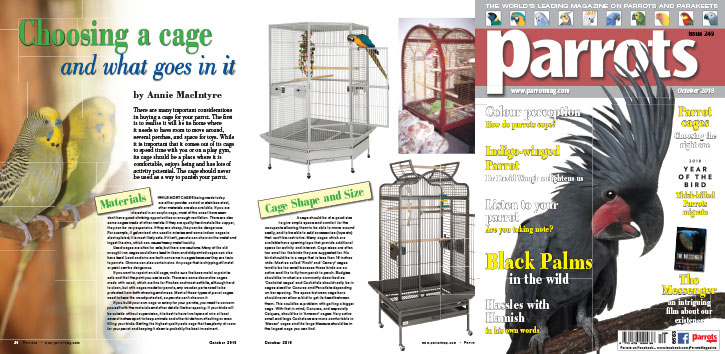
By Annie MacIntyre
There are many important considerations in buying a cage for your parrot. The first is to realise it will be its home where it needs to have room to move around, several perches, and space for toys. While it is important that it comes out of its cage to spend time with you or on a play gym, its cage should be a place where it is comfortable, enjoys being and has lots of activity potential. The cage should never be used as a way to punish your parrot.
While most cages being made today are either powder coated or stainless steel, other materials are also available. If you are interested in an acrylic cage, most of the ones I have seen don't have good climbing opportunities or enough ventilation. There are also some cages made of other metals. If they are quality hard metals like copper, they can be very expensive. If they are cheap, they can be dangerous. For example, if galvanised wire used in aviaries and some indoor cages is electroplated, it is most likely safe. If it isn't, parrots can chew on the metal and ingest the zinc, which can cause heavy metal toxicity.
Used cages are often for sale, but there are cautions. Many of the old wrought iron cages could have lead in them and old painted cages can also have lead. Lead and zinc are both concerns in cages because they are toxic to parrots. Chrome can also contain zinc. Any cage that is chipping off metal or paint can be dangerous.
Buy Now!








Parrot Chat
Buyers Guides
Breeding articles